
New York plumbers are some of the priciest in the nation. High cost of living and aging buildings contribute to their hefty price tag. Learn the other factors affecting how much a plumber costs in New York City.
Whether you’re washing your dog or watering your garden, we’ve got the faucet for you


Outdoor faucets provide water for your vegetable garden, help you attach a hose to wash your car, or allow you to fill up the kiddie pool with water during the hot summer months. Because having a water source outside has many benefits, there are several outdoor faucet types, each with pros and cons. Here’s how the types of outdoor faucets differ for your watering needs.

A spigot faucet follows the old adage, “righty tighty, lefty loosey,” as it is controlled by a compression valve that opens when turned to the right and closes when turned to the left. These are common faucets used to connect hoses or sprinklers or to fill up buckets and other containers, as they have a wider mouth than most other faucets.
Most outdoor spigots are not freeze-proof and must be turned off and drained before cold weather arrives. In addition, they can become damaged over time from freezing temperatures.
If your outdoor spigot is leaking or difficult to turn, it might be time to replace it. Replacing an outdoor spigot is an easy DIY task that most people can handle in an hour or so. If you’d rather leave this one to a pro, a faucet repair specialist can handle the job.
| Pros | Cons |
|---|---|
| Simple to repair | Prone to damage from freezing |
| Easily attaches to hoses | Prone to corrosion and buildup |
| Easy to use with lawn sprinklers | Can leak or become difficult to turn |
Best for: Homeowners in warmer climates and those with small- to medium-sized yards

Hose bibb faucets rely on a compression valve to control the flow of water. They’re often used in conjunction with garden hoses, as they have a threaded connection that can be screwed onto the end of a hose. This is what differentiates them from more traditional types of outdoor water spigots.
A washer controls the water flow when the hose bibb is off. Hose bibbs can be made from brass, aluminum, plastic, steel, or cast iron, and weatherproof elements can be added. However, like spigots, hose bibbs are not freeze-proof.
| Pros | Cons |
|---|---|
| Easily attaches to hoses | Prone to damage from freezing |
| Highly durable | Can leak or drip |
| Budget-friendly | Not ideal in cold climates |
Best for: Avid gardeners and homeowners in warmer climates
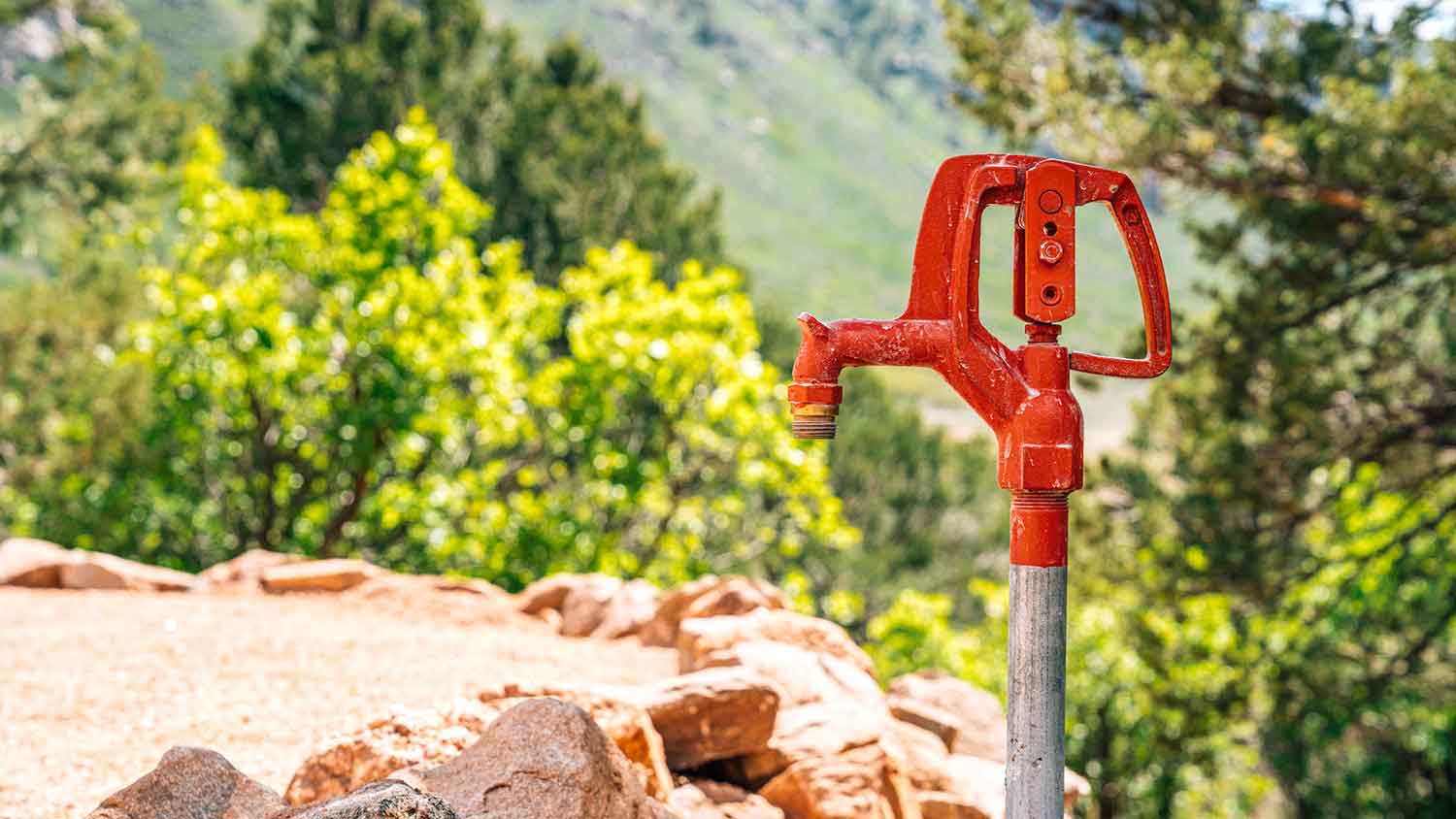
A yard hydrant consists of an underground pipe that emerges 2 or 3 feet above the ground's surface, accompanied by a valve designed for water release. Unlike home-connected fixtures, yard hydrants are one of the only outdoor faucets that find utility in regions with limited water access, such as rural areas or places with insufficient water pressure. Moreover, they prove invaluable in furnishing water to expansive yards positioned too far from the residence for a feasible hose connection.
While straightforward, setting up yard hydrants necessitates extending the plumbing from the home to the chosen hydrant location, all of which must lie below the frost line.
| Pros | Cons |
|---|---|
| Can be placed away from the home | Difficult installation process |
| Works in places with poor water pressure | Higher cost |
| Suits large properties, rural areas, and farmland | Not practical for many residential properties |
Best for: Homeowners with large plots of land that need distinct water sources, those in rural locations, and those with lower water pressure
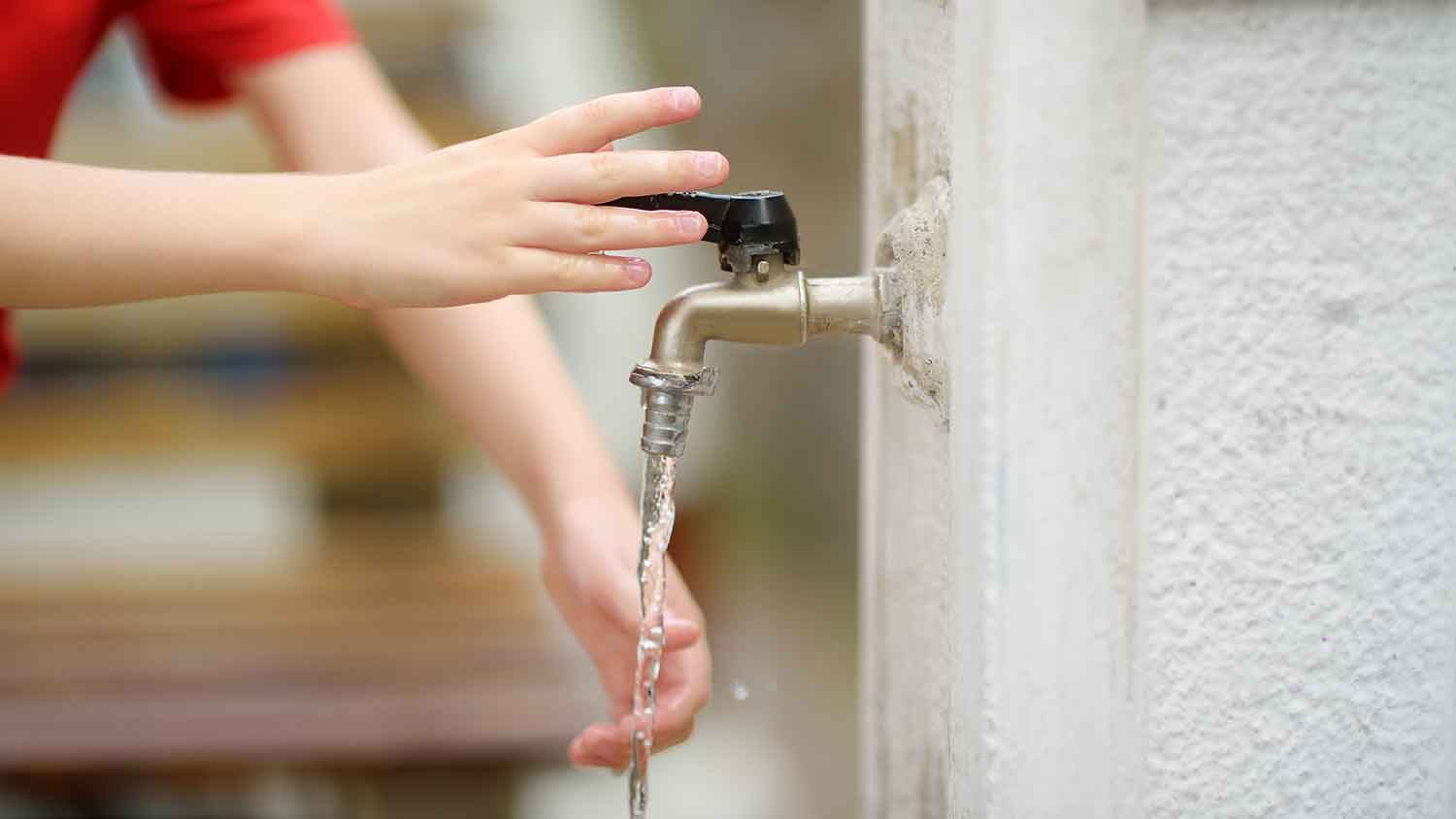
The ball valve faucet has a long lever handle that controls the flow of water and a hollow ball inside. When the lever is in the on position, the ball allows water to flow through. The simple design allows water to be turned on quickly and easily.
Ball valve faucets are made of brass or stainless steel, making them durable, able to withstand rain and snow, and easy to install. In addition, they’re simple to clean as they have a removable head to wipe out any debris or dirt that gets stuck inside.
| Pros | Cons |
|---|---|
| Extremely durable | Higher cost |
| Easy to use and clean | No variable flow |
| Can withstand rain and snow | Handle can stick in one position |
Best for: Homeowners who need higher water output
Frost-free, or frost-proof faucets are designed to withstand freezing temperatures, snow, and frost as low as minus 20 degrees Fahrenheit, making them a good choice if you live in a cold climate.
You should winterize your pipes before temperatures regularly drop to 32 degrees Fahrenheit. Depending on where you live, this could start as early as September.
This type of outdoor faucet comes with a metal pipe that connects to other pipes in your home. The indoor pipe has a valve that allows you to control the flow of water. When the valve is shut, the faucet completely empties of water, preventing water inside the pipes and the faucet from freezing. You can buy frost-free faucets with one or two handles, which are made from metal or plastic.
| Pros | Cons |
|---|---|
| Prevents pipes from freezing | Higher cost |
| Saves time during the winterization process | Harder to DIY |
| Safe for homes in cold climates | Extra steps required during cold weather |
Best for: Homeowners in colder climates

Anti-siphon, or “non-siphon,” faucets prevent water from backtracking into the water supply line. For example, if your garden hose is sitting in a puddle and the pressure drops, the water flowing back from the puddle into the water supply line could contaminate your home’s water.
The anti-siphon function is activated when the flow of water exceeds a certain amount, such as 1 gallon per minute (GPM). Many new homes must have anti-siphon valves in their faucets to meet plumbing codes. They’re often used in bathrooms, kitchens, and outdoor faucets. Check with a local faucet expert to determine if you need anti-siphon valves installed.
| Pros | Cons |
|---|---|
| Protects your home’s drinking water | High cost |
| Can add to an existing faucet | Prone to damage from freezing |
| Can use with a chemical sprayer or fertilizer | Can leak or crack |
Best for: Newer homes, as many new plumbing codes require faucets to have anti-siphon components
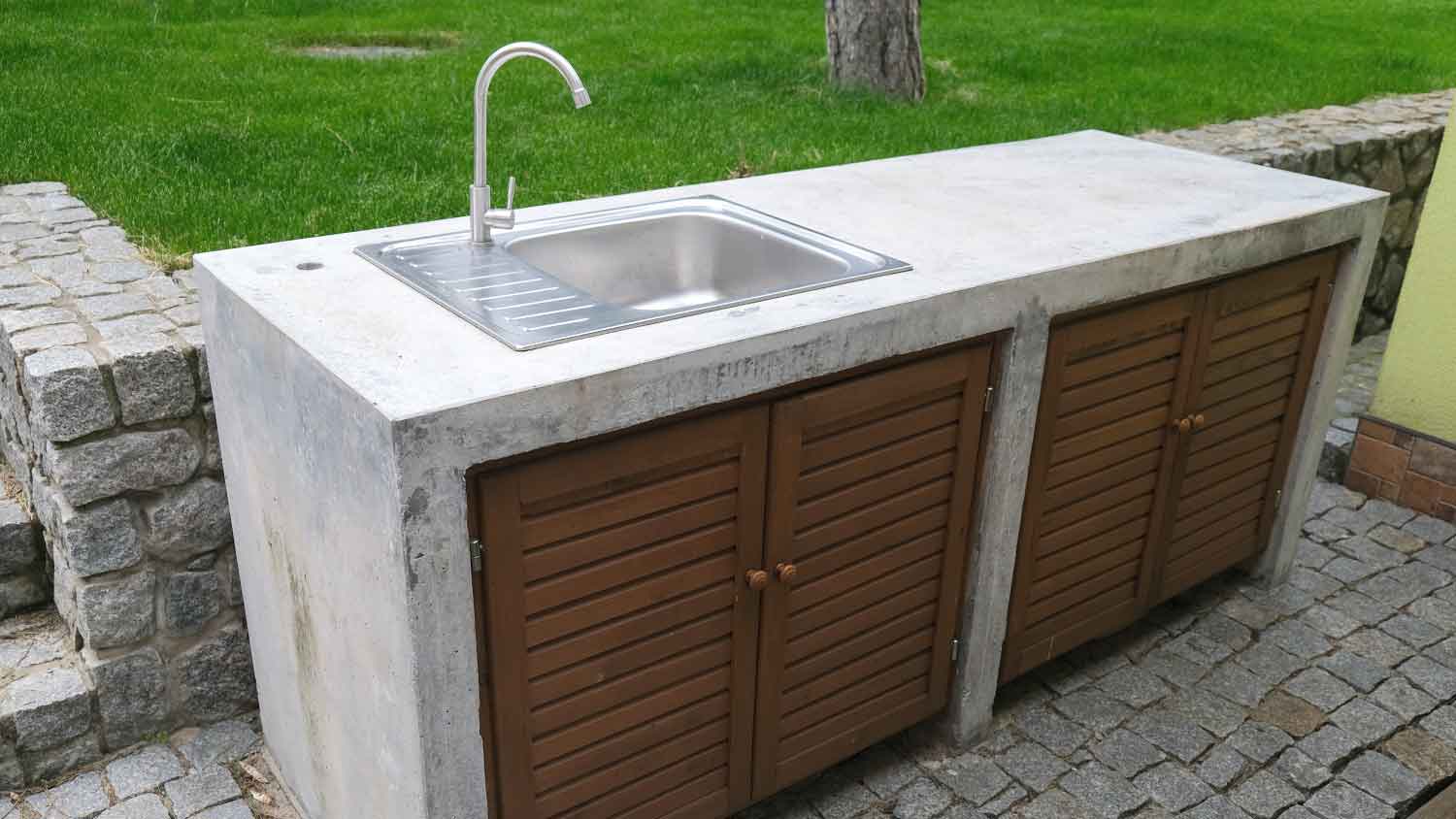
Outdoor kitchen designs are growing in popularity as they offer a way to prepare food and drinks for guests or wash dishes while enjoying the sunshine. Outdoor kitchen faucets are connected to a kitchen setup, designed to withstand extreme weather, and have higher flow rates than indoor kitchen faucets.
Make sure to look for a faucet with a stainless steel finish, which makes it rust-resistant and able to handle the elements better than other materials. Also, look for a waterproof option to prevent wear and tear from common use. Your outdoor kitchen faucet will likely be an additional faucet specifically for tasks you do in a sink, while you’ll need another to handle things like watering the garden, washing the car, and running the sprinklers.
| Pros | Cons |
|---|---|
| Makes an outdoor kitchen fully functional | High cost |
| Great for washing dishes and cooking | Won’t work with a garden hose |
| Can withstand rain and snow | Not practical for gardening and household maintenance tasks |
Best for: Homeowners who like to entertain or cook outside and those who have other faucets for gardening and outdoor tasks
An outdoor faucet should add convenience and functionality to your outdoor space, so there are a few crucial factors to consider. Before choosing an outdoor faucet, take into account who will be using it, how durable you need it to be, and how you want it to look on your house, among other things.
To install an outdoor faucet, you need to run plumbing lines from the main water source to the faucet's location. Installing outdoor faucets on the exterior of a house is relatively simple, especially for a qualified plumber. However, yard hydrant installation is more complex and requires extending the plumbing further than you would for a standard outdoor spigot or hose bibb—making these installations more costly.
Before settling on an outdoor faucet, consider who will be using it. Outdoor faucets with a round twist-style handle can be more difficult to turn on than others, which can be good if small children are in the home. On the other hand, this could not be the best choice for anyone in the home with disabilities.
Yard hydrants can also be difficult to turn on as you have to pull the handle upward, whereas a ball valve faucet is easy to turn on.
Most outdoor faucets are durable and require little maintenance, but regardless of which type you choose, there are a few things you should do throughout the year. Regularly clean the faucet and keep debris away from the handle and out of the valves. Make sure to winterize the faucet by flushing the pipes and then closing them so they don’t freeze and burst. Depending on the winter temperatures, you may want to drip or cover your outdoor faucets.
To ensure your water stays clean and usable, make sure your outdoor faucet is equipped with a backflow preventer. This device is attached to the outdoor faucet and prevents water from flowing backward into the system and contaminating the water supply.
Spigots, hose bibbs, and ball valve faucets don’t vary much in style and finish. They’re made of brass, though some manufacturers may offer different finishes like chrome. Higher-end outdoor faucets may also offer more style options. Yard hydrants provide a distinct look but are best for large yards or rural areas.
From average costs to expert advice, get all the answers you need to get your job done.

New York plumbers are some of the priciest in the nation. High cost of living and aging buildings contribute to their hefty price tag. Learn the other factors affecting how much a plumber costs in New York City.
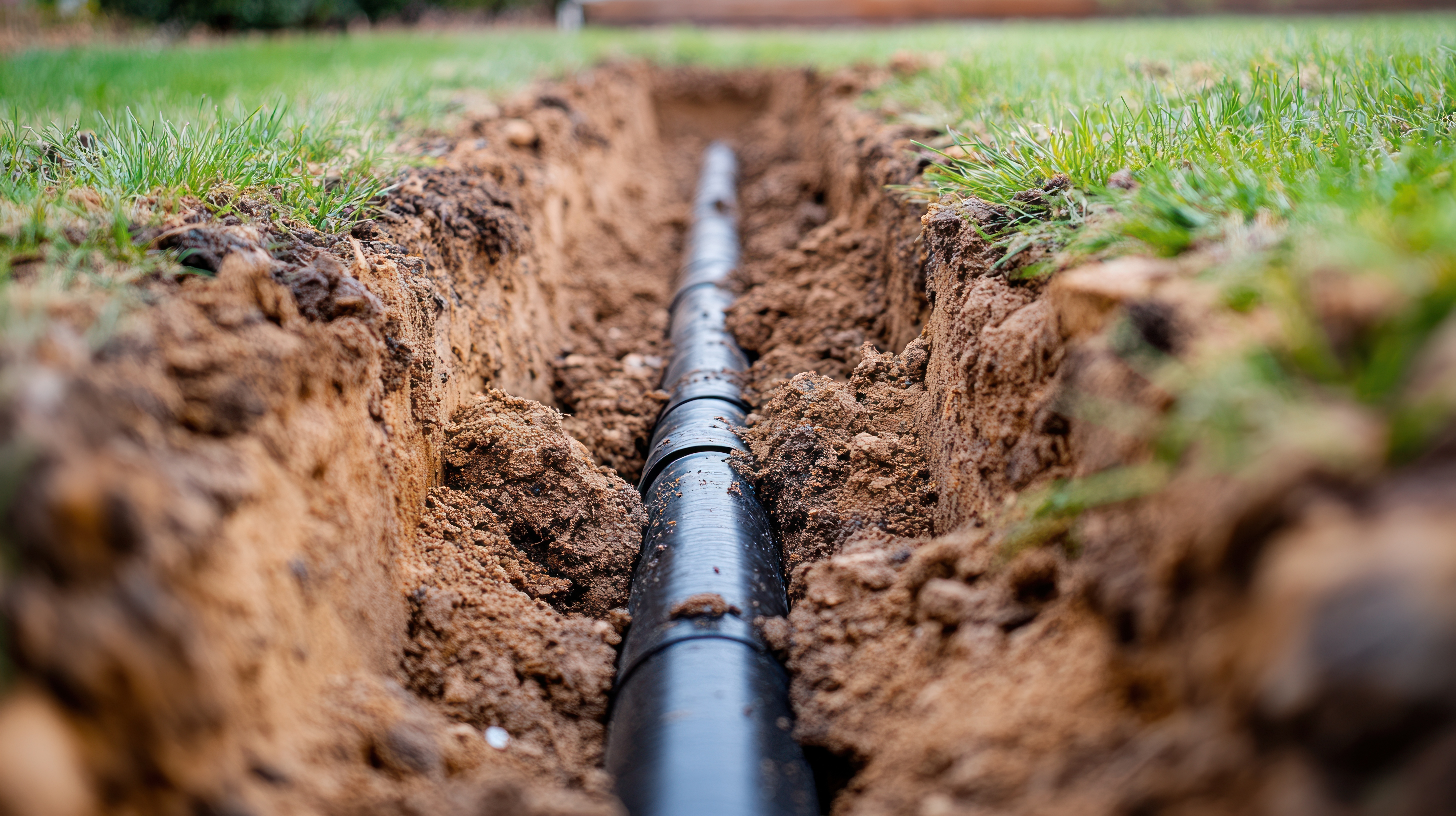
Discover the primary factors that affect your main water line replacement cost in New York, including length, materials, and the necessary installation method.
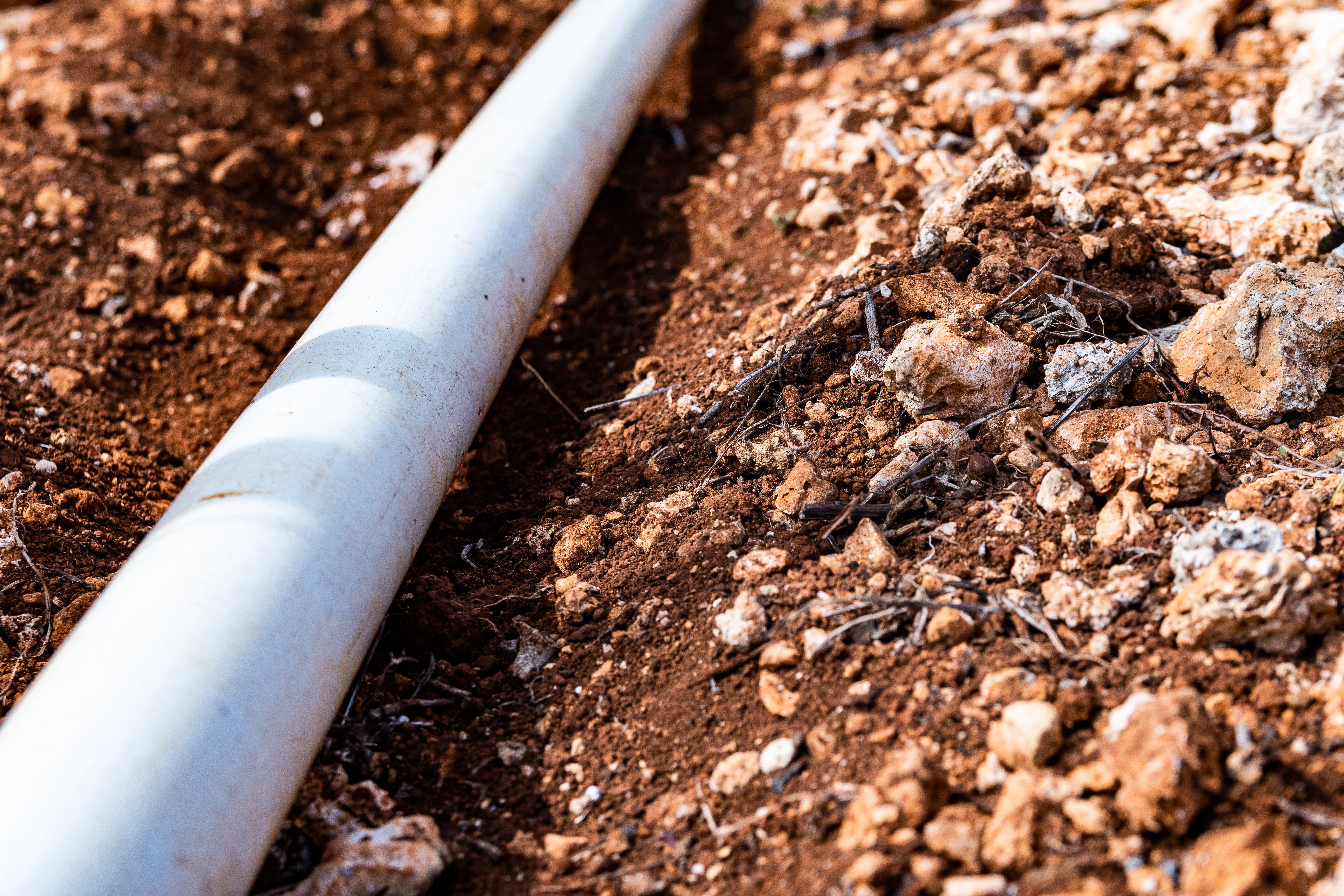
Discover the pricing factors that will affect your main water line repair cost in New York, including the repair type, size, and accessibility challenges.

Understand how much water a toilet uses per flush and find ways to make your house more sustainable and efficient while lowering water bills.

If your toilet is leaking at the base, it can be a cause for concern. So grab some towels to stop the flow and explore these six common culprits for a leaky base.

Clogs can keep drains backed up and build up odors in kitchens and bathrooms. Learn how to use a plumbing snake, a simple solution to clearing clogs.